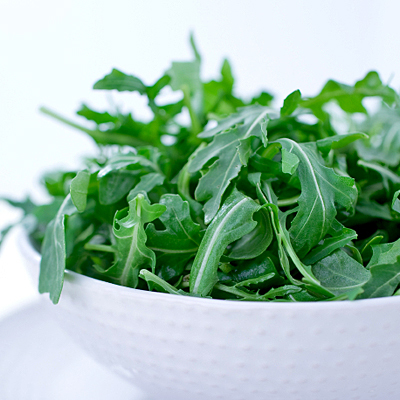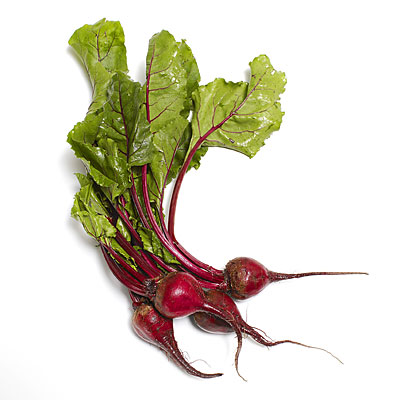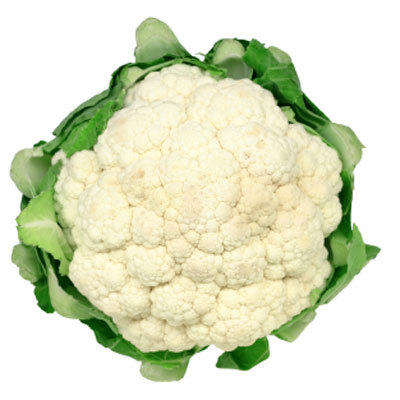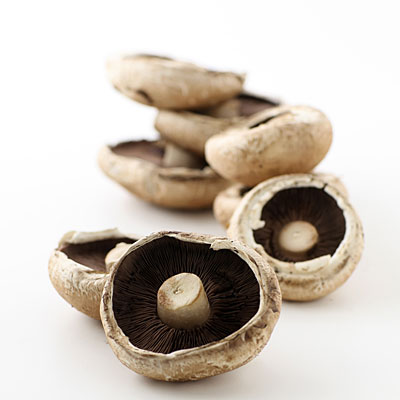I thoroughly enjoy eating! Nothing is better than knowing that the foods I'm eating are adding to my quest to live a healthy lifestyle. Here is a list of foods that are not only low in calories and nutritious, but also super delicious. Step outside the box and explore filling your plate with some of these powerful superfoods!
1. Arugula- 4 calories per cup

This delicate, peppery green is amazingly low in saturated fat and cholesterol. It is packed with fiber, vitamins A, C and K, and other nutrients, including potassium. Perfect in salads, soups, or anywhere you would use leafy greens arugula may even boost your romantic life! Evidence suggests that the minerals and antioxidants packed into dark, leafy greens are essential for our sexual health because they help block absorption of toxins that dampen the libido.
2. Asparagus- 27 calories per cup
Asparagus is traditionally known as a detoxifying food, because it contains high levels of an amino acid that acts as a diuretic, flushing excess fluid out of your system. Asparagus is also a powerhouse of vitamins and minerals, including vitamins A, C, E, and K, B6, folate, iron, copper, and even protein. I love the tender shoots in their most natural form, raw and tossed into salads or steamed.
3. Broccoli- 31 calories per cup
Broccoli is low in calories. Not only is it packed with fiber, vitamins, and minerals, it contains powerful antioxidants that may improve your odds of breast cancer survival and reduce the risk of colon cancer.
The chemical in broccoli responsible for the protective effect is called sulforaphane, which gives broccoli its slightly bitter flavor.
4. Brussel Sprouts- 38 calories per cup
Brussels sprouts are super-low in calories but loaded with cancer-preventing phytonutrients and fiber. These veggies, sometimes called little cabbages, get a bad rap, but they taste great roasted or sauteed with a sweet or tangy sauce.
5. Cabbage- 22 calories per cup
Crunchy, sweet, and affordable! Cabbage is packed with vitamins, minerals, fibers, and several phytonutrients thought to prevent cancer. Glucosinolate is a metabolic detoxifier and sulphoraphane is a powerful anti-carcinogenic. Cabbage comes in several varieties. The recipe possibilities are endless.
Green- Green cabbage is the most common variety.Use it in salads and slaws, stir-fry it, or long-cook it to bring out its essential sweet nature. Look for heads that feel heavy for their size , with tightly packed, moist looking leaves. The queen of slaws, green cabbage can stand up to even the heaviest, creamiest, or spiciest of dressings.
Savoy- cabbage is also known as curly cabbage. With ruffled, lacy, deeply ridged leaves, Savoy cabbages are perhaps the prettiest cabbages around. The leaves are more loosely layered and less tightly packed than green or red cabbage, although its uses are similar. It is delicious thinly sliced in salads or quickly stir-fried. Savoy cabbage is a bit more tender than other cabbages and works nicely as a fresh and crunchy wrap. try using it in place of tortillas with your favorite fillings.
Red- Red cabbage looks like green cabbage except, it's a lovely magenta color. Red cabbage heads tend to be a bit smaller than green cabbages, but look for similarly tightly packed, moist-looking leaves and heads that feel heavy for their size. Red cabbage is delicious thinly sliced in salads, mixed into slaws with green cabbage, or cooked. Note: red cabbage turns an odd blue color when cooked. Mitigate this effect by adding some sort of acid like vinegar or lemon juice when cooking it.
Napa- Napa cabbage is sometimes called Chinese cabbage or celery cabbage. Unlike head cabbages, napa has long light green leaves that flower off of thick, white stalks. It looks a bit like a cross between romaine lettuce and pale Swiss chard. It has a lovely mild flavor with a peppery kick that is delicious in salads or stir-fry. You can also turn it into spicy kimchi.
Bok choy- Bok Choy has distinct leaves growing from a central stalk. It looks a fair like Swiss chard but with pale green stalks and leaves. It has a mild but bright cabbage-like flavor. Bok Choy is most often used in stir-frys, but braising also brings out its sweet flavor. Baby bok choy can be cooked whole, if you like, but bok choy is perhaps at its best when the leaves are separated and cooked loose. I love to slice it very thin and use it in stir fry and salads.
6. Lettuce- Calories: 5 per cup
You can literally eat pounds of any variety of lettuce and never gain an ounce. (I wouldn't suggest trying to eat pounds in one sitting...lol) Romaine lettuce alone is a great source of B vitamins, folic acid, and manganese, which helps regulate blood sugar and is essential for proper immune system function. Choose other dark green or purple varieties such as green or red leaf for the most nutrients, and toss with a zesty homemade vinaigrette.
7. Beets- 37 per 1/2 cup
Beets are sweet but have very few calories—so you can have something sweet without the guilt. They also are rich in cancer-fighting antioxidants. Beyond their rich, earthy deliciousness, beets are also a nutritional powerhouse. Rich in iron, fiber, folate, and potassium, they’re an excellent way to boost the nutrition in a salad or eat them as a side dish. They get their gorgeous color from betanin, a potent antioxidant. Don't throw the greens away! Toss them in a smoothie for a punch of greens or add them to stir fry.
The chemical in broccoli responsible for the protective effect is called sulforaphane, which gives broccoli its slightly bitter flavor.
4. Brussel Sprouts- 38 calories per cup
Brussels sprouts are super-low in calories but loaded with cancer-preventing phytonutrients and fiber. These veggies, sometimes called little cabbages, get a bad rap, but they taste great roasted or sauteed with a sweet or tangy sauce.
5. Cabbage- 22 calories per cup
Crunchy, sweet, and affordable! Cabbage is packed with vitamins, minerals, fibers, and several phytonutrients thought to prevent cancer. Glucosinolate is a metabolic detoxifier and sulphoraphane is a powerful anti-carcinogenic. Cabbage comes in several varieties. The recipe possibilities are endless.
Green- Green cabbage is the most common variety.Use it in salads and slaws, stir-fry it, or long-cook it to bring out its essential sweet nature. Look for heads that feel heavy for their size , with tightly packed, moist looking leaves. The queen of slaws, green cabbage can stand up to even the heaviest, creamiest, or spiciest of dressings.
Savoy- cabbage is also known as curly cabbage. With ruffled, lacy, deeply ridged leaves, Savoy cabbages are perhaps the prettiest cabbages around. The leaves are more loosely layered and less tightly packed than green or red cabbage, although its uses are similar. It is delicious thinly sliced in salads or quickly stir-fried. Savoy cabbage is a bit more tender than other cabbages and works nicely as a fresh and crunchy wrap. try using it in place of tortillas with your favorite fillings.
Red- Red cabbage looks like green cabbage except, it's a lovely magenta color. Red cabbage heads tend to be a bit smaller than green cabbages, but look for similarly tightly packed, moist-looking leaves and heads that feel heavy for their size. Red cabbage is delicious thinly sliced in salads, mixed into slaws with green cabbage, or cooked. Note: red cabbage turns an odd blue color when cooked. Mitigate this effect by adding some sort of acid like vinegar or lemon juice when cooking it.
Napa- Napa cabbage is sometimes called Chinese cabbage or celery cabbage. Unlike head cabbages, napa has long light green leaves that flower off of thick, white stalks. It looks a bit like a cross between romaine lettuce and pale Swiss chard. It has a lovely mild flavor with a peppery kick that is delicious in salads or stir-fry. You can also turn it into spicy kimchi.
Bok choy- Bok Choy has distinct leaves growing from a central stalk. It looks a fair like Swiss chard but with pale green stalks and leaves. It has a mild but bright cabbage-like flavor. Bok Choy is most often used in stir-frys, but braising also brings out its sweet flavor. Baby bok choy can be cooked whole, if you like, but bok choy is perhaps at its best when the leaves are separated and cooked loose. I love to slice it very thin and use it in stir fry and salads.
6. Lettuce- Calories: 5 per cup

You can literally eat pounds of any variety of lettuce and never gain an ounce. (I wouldn't suggest trying to eat pounds in one sitting...lol) Romaine lettuce alone is a great source of B vitamins, folic acid, and manganese, which helps regulate blood sugar and is essential for proper immune system function. Choose other dark green or purple varieties such as green or red leaf for the most nutrients, and toss with a zesty homemade vinaigrette.
7. Beets- 37 per 1/2 cup

Beets are sweet but have very few calories—so you can have something sweet without the guilt. They also are rich in cancer-fighting antioxidants. Beyond their rich, earthy deliciousness, beets are also a nutritional powerhouse. Rich in iron, fiber, folate, and potassium, they’re an excellent way to boost the nutrition in a salad or eat them as a side dish. They get their gorgeous color from betanin, a potent antioxidant. Don't throw the greens away! Toss them in a smoothie for a punch of greens or add them to stir fry.
8. Cauliflower- 25 calories per cup 

Like other cruciferous veggies, cauliflower is full of cancer-fighting phytonutrients and is a great source of vitamin C and folate. Eat it raw, roasted or lightly steamed florets. Try it in a raw cauliflower salad or steam and mash for a healthier alternative to traditional mashed potatoes. Cauliflower is one of the top superfoods, that may improve your odds for breast cancer survival.
9. Mushrooms- 15 calories per cup

Meaty and incredibly low-cal, mushrooms are also incredibly diverse. White button, Portobello, shiitake, and Maitake are just a few of the varieties you'll find in your grocery store. Fortunately, just about all mushrooms contain some form of immune-boosting antioxidants, along with potassium, B vitamins, and fiber. Shiitakes, for example, contain lentinan, a nutrient that is thought to have anticancer properties. All varieties of mushrooms are good sources of vitamin D, thiamin, riboflavin, niacin, vitamin B6, pantothenic acid, phosphorus, potassium, copper and selenium. Try them sauteed, stuffed, marianated....Just get creative!
Right on sistah! Thanks fo sharing the knowledge!
ReplyDelete